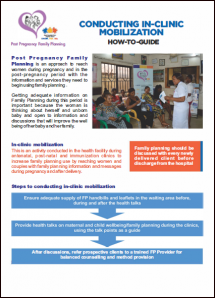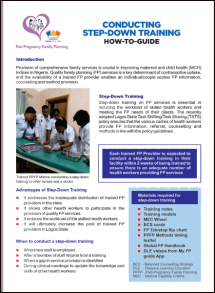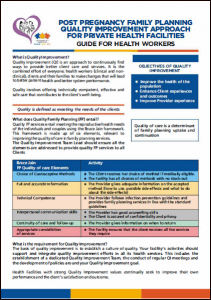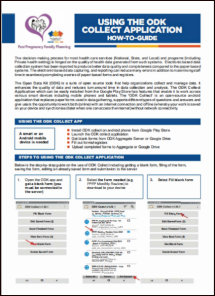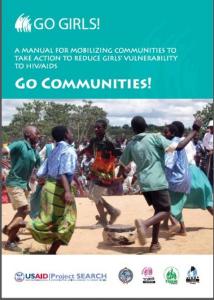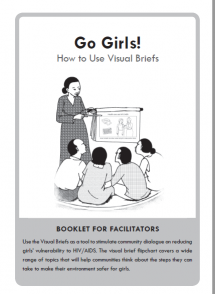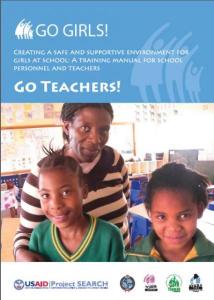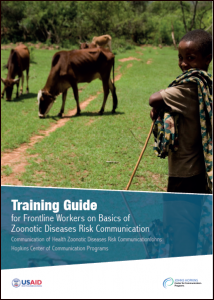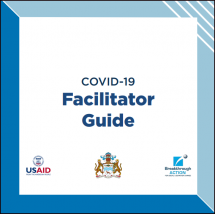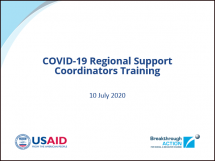Guide for Conducting In-Clinic Mobilization
In-clinic mobilization is an activity conducted in the health facility during antenatal, post-natal and immunization clinics to increase family planning use by reaching women and couples with family planning information and messages during pregnancy and after delivery.
Since the health worker on duty is responsible for providing comprehensive family planning information to the clients by giving health talks during MCH clinics, this how-to guide describes the step by step process of how to run this activity and offers talking points.
Source: Johns Hopkins Center for Communication Programs
Date of Publication: November 21, 2020
SIMILIAR RESOURCES
Tools
Examples
- Improving Interpersonal Communication Between Health Care Providers and Clients
- Innovation Brief: Engaging Influencers and Non-Traditional Actors in Participatory Processes for Family Planning Program Design
- Innovation Brief: Breaking Down Barriers to Family Planning Access by Engaging Agents of Change
- Developing a Social and Behavior Change Research Agenda
- Service Communication Implementation Kit
- Healthy Timing and Spacing Of Pregnancy: A Trainer’s Reference Guide
- COVID-19 Planning Guide for Adapting Risk Communication and Community Engagement as Public Health and Social Measures Shift: With Safety Tips for Conducting Community Meetings
- Provider Behavior Change Implementation Kit
- Social Marketing: Leveraging the Private Sector to Improve Contraceptive Access, Choice, and Use
- Dengue Clinical Case Management Online Course
- Post Pregnancy Family Planning Quality Improvement Approach for Private Health Facilities
- A Guide to Conducting Step Down Training
- In-clinic Demand Generation for Post Pregnancy Family Planning Services In The Private Sector: A Promising Strategy
- A Guide to Conducting Outreaches for Family Planning Services
- Collection of FP Commodities from the State Government

